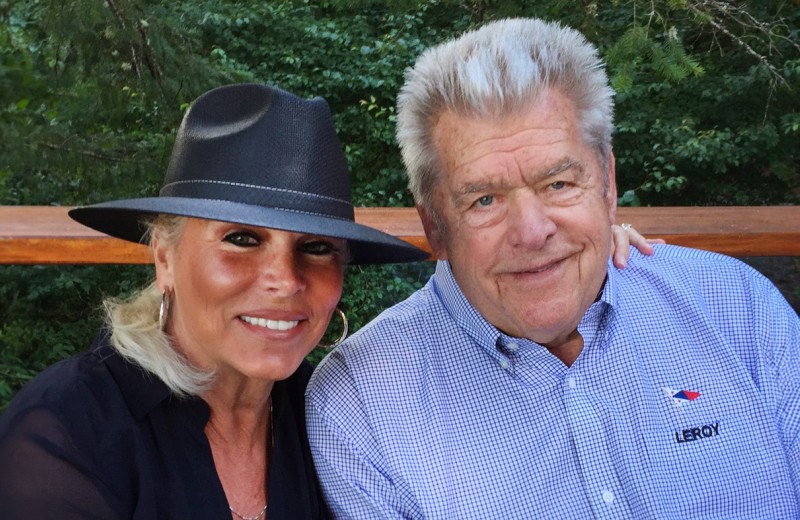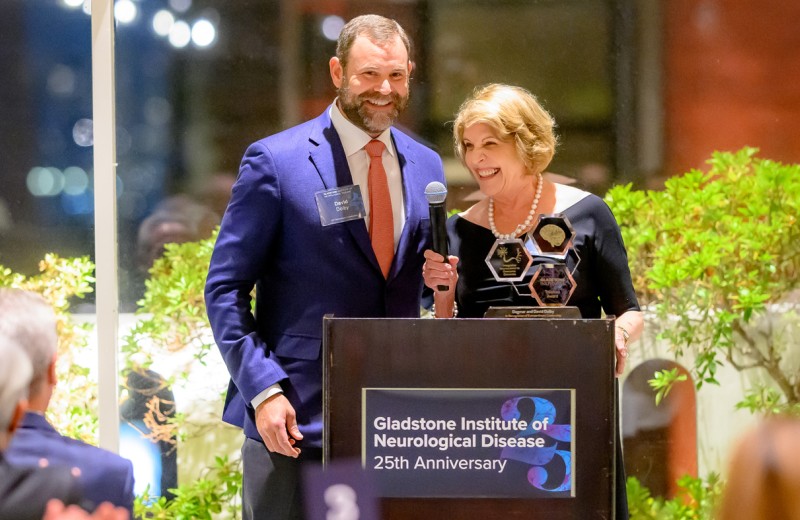Gladstone NOW: The Campaign Join Us on the Journey✕

The Freed family: Amber and Mark with their children, twins Riley and Maxwell. Amber is racing against the clock to find a genetic cure that could help her son. Photo: Brad Livengood
Maxwell is 3 years old. He’s a sensitive boy and enjoys snuggling with anyone who is interested. He particularly loves hugging his twin sister, Riley.
In many ways, Maxwell is like any other toddler. But he also has a rare neurological condition called SLC6A1. And any day, he could become afflicted with a debilitating form of epilepsy that would rob him of all the skills he’s fought so hard to gain over the course of his young life. Seizures may have already started in Maxwell’s brain and gone unnoticed, and some types of seizures could even lead to sudden unexpected death.
This, of course, is a terrifying thought for his mother, Amber Freed. It’s also why she embarked on a race to find a genetic cure that could help her son.
“When this all began, I was told nothing could be done, but it turns out a determined mother can do better work than the FBI,” says Freed, who is now the CEO of SLC6A1 Connect, a patient organization she founded to raise awareness and advance scientific research on SLC6A1. “You stop at nothing when you’re a parent. That’s why we’ve come so far in such a short time.”
Along her journey, Freed met Gladstone Investigator Jeanne Paz. Together, along with a large group of experts, they are now hoping to finalize the research needed to launch a Phase I clinical trial for a gene replacement therapy.
An Army of One
Freed’s journey began in March 2017. After 2 years of in vitro fertilization, Maxwell and Riley were finally born.
However, Amber and her husband Mark soon noticed that Maxwell wasn’t reaching the same milestones as his sister, and he seemed to have strange tendencies and poor eyesight. After being turned away by countless doctors, Amber and 9-month-old Maxwell found their way to an ophthalmologist’s office. That’s where she learned the most horrifying news.
“The doctor said to me, ‘I can tell you that your baby can see, but I can’t tell you if he’s going to live,’” she recalls. “He told me something was wrong with Maxwell’s brain, and that it was one of 7,000 rare diseases, but it would be impossible to identify which one. One thing was for sure: it was a death sentence. And I should prepare my family.”
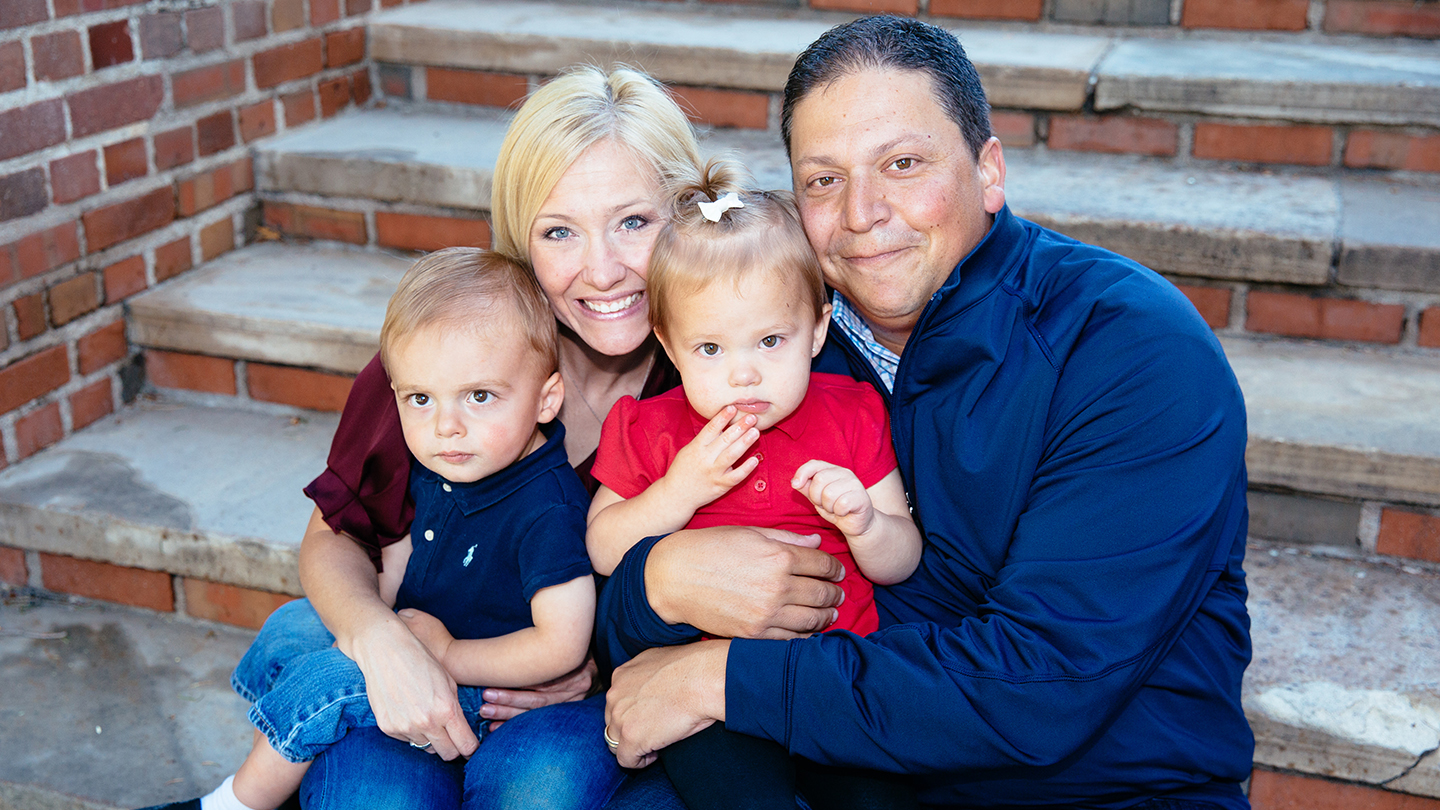
When Maxwell (left) was 9 months old, his parents Amber and Mark learned something was wrong with his brain. They were told it was a death sentence. Photo: Brad Livengood
Once the initial shock settled, Maxwell spent the next 6 months undergoing a battery of genetic tests. Then, in the summer of 2018, Freed was called into an office at Children’s Hospital Colorado. The doctors informed her that Maxwell has a genetic mutation known as SLC6A1, and handed her a five-page document containing all the information known about the disease.
Freed took out her phone to Google SLC6A1, but found not a single search result.
“I was so confused to get the diagnosis of something that didn’t even have a name,” says Freed. “I was in a room full of doctors who knew nothing about my son’s condition. It was the most isolating, horrible feeling in the entire world. I wanted to crawl under a rock and never, ever reemerge.”
But Freed did quite the opposite.
She asked the doctors what they would do if their child received the same diagnosis. They replied that she should become an expert in the disease and come back to educate them. They told her to start calling scientists.
“I realized this was my moment,” Freed says. “I was going to have to fight like a mother to figure out a solution to this disease entirely by myself. Nobody was going to help me. I was an army of one.”
That day, she quit her career as a consumer equity analyst and started making calls. Lots of calls.
Slow Start, Rapid Progress
Freed is not a science buff, so she first set out to understand the basics. She read textbooks on genetics and neurology, and learned everything she could about the brain pathway impaired by Maxwell’s condition. She spent 85 hours a week making phone calls to the US, Europe, Asia, and Australia. To convince scientists to return her calls, she had snacks and cookies delivered to their office.
She uncovered that SLC6A1 is a progressive neurodevelopmental disease. It starts with a movement disorder similar to Parkinson’s disease, a speech disorder, and intellectual disability. No treatments currently exist to help children who suffer from this disease.
“It was simply incredible when we realized we were onto something so much bigger than we thought. This little story now transcends my family, and we have the opportunity to help a multitude of people.”
Only 2 months after Maxwell’s diagnosis, in August 2018, Freed had begun understanding the mechanism of disease for SLC6A1 and identified the most promising approach to a cure—gene therapy.
Then, she found a gene replacement expert and, after hopping on a flight to track him down at a conference, she convinced him to help her. Together, they outlined a plan to cure Maxwell’s disease.
In November 2018, Freed brought together 50 of the world’s leading experts on genetic mutations for a meeting in New Orleans. There, she discovered that SLC6A1 did not only affect 34 people in the world, as she had originally been informed. In fact, based on the group’s research, she learned that the prevalence of this genetic mutation is much greater. It simply had not been included in newborn testing panels until 2017.
“It was simply incredible when we realized we were onto something so much bigger than we thought,” says Freed. “This little story now transcends my family, and we have the opportunity to help a multitude of people.”
“I remember sitting in that diagnostic room when we first learned about Maxwell’s disease, and being told to give up because it was going to be deemed ‘too rare to care’ by academics and companies alike,” Freed adds. “All of that sadness and fear was replaced with hope. I knew in that moment that a disease is only rare until it messes with the wrong mother.”
Home Run
After overcoming numerous obstacles—including the onset of the COVID-19 pandemic—Freed worked with her collaborators to begin testing a gene replacement therapy in mice that are genetically engineered to have Maxwell’s condition. They had a Pre-Investigational New Drug Application meeting with the US Food and Drug Administration to ensure their future cure was on the right path to obtain necessary approvals.
By May 2020, they were well on their way to a clinical trial, but still had to address significant outstanding gaps in their science. Then, while combing through the notes of a scientific conference, Freed came across Gladstone’s Jeanne Paz.
“It was a serendipitous moment,” says Freed. “Not only is Jeanne an expert in mouse epilepsy, which is what I was looking for, but she also happens to be an expert in the exact brain pathway affected by SLC6A1. She fills every single missing piece of our puzzle. She’s a home run for us.”
Paz was immediately onboard. She started lending her expertise in monthly meetings with a group of epilepsy researchers working on the gene therapy.
“Genetic mutations like Maxwell’s can lead to seizures,” explains Paz, PhD, associate investigator at Gladstone and associate professor of neurology at UC San Francisco. “These seizures start like terrorist attacks on the brain—you don’t know when they’re going to happen and whether or not they’ll be fatal. In my lab, we use mice to understand where the seizures start and, more importantly, how to stop them.”
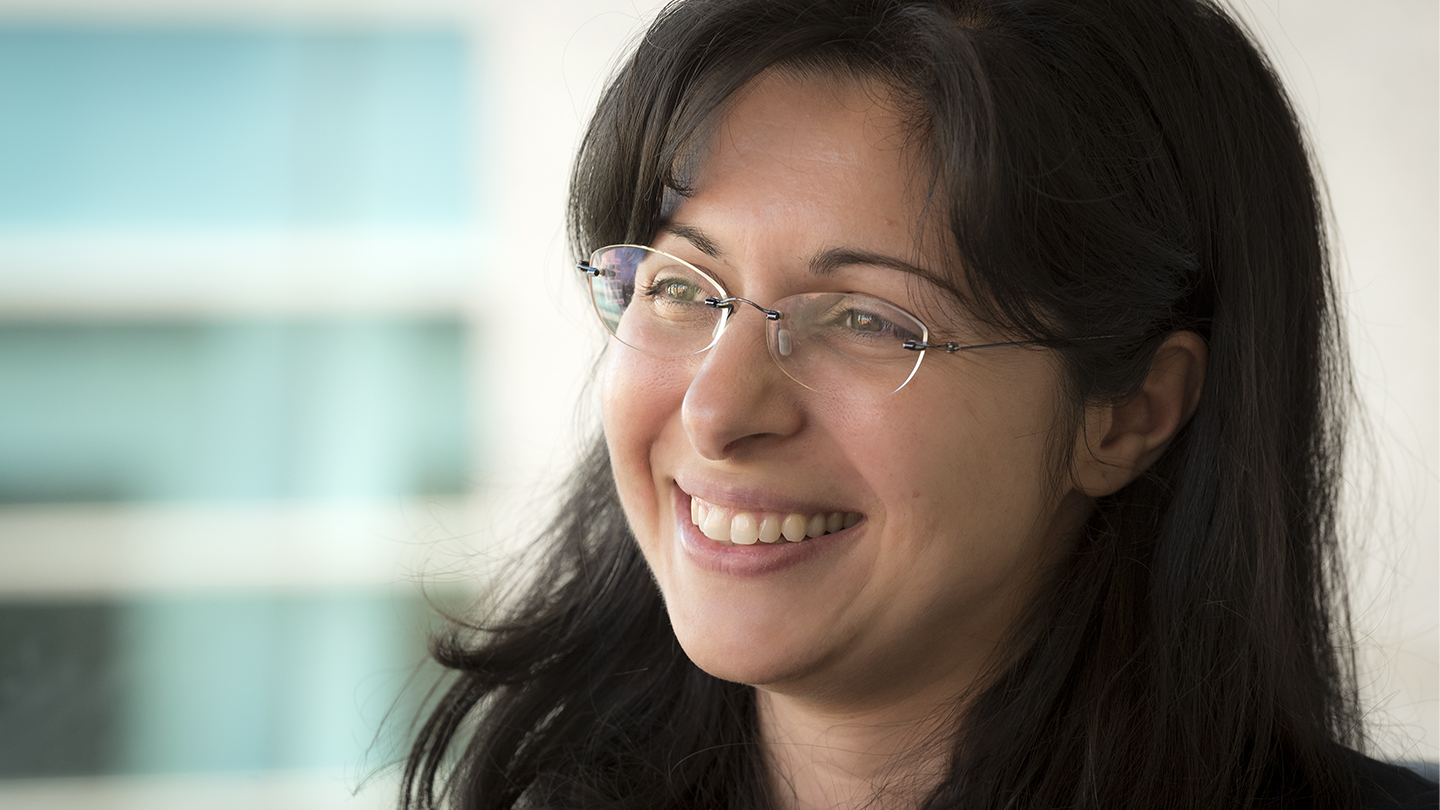
Gladstone Investigator Jeanne Paz is lending her expertise in epilepsy research to help find a gene therapy for SLC6A1.
One of the main roadblocks faced by Freed was how to read results of a test that detects electrical activity in the brain, known as an electroencephalogram (EEG). She and her collaborators were looking at abnormal EEGs from the mouse models, but could not decipher them. She sent them to Paz, who instantly identified the presence and types of seizures.
“Jeanne just came in and lifted this giant boulder from my shoulders,” Freed says. “It was one of the rare moments in my journey when I actually got a sound night of sleep.”
Paz’s input helped the team quantify the effect of the gene therapy on seizures. Now, thanks to a generous donation from SLC6A1 Connect, Paz and her team are designing a device to record brain activity in mice and pinpoint the specific cells involved in generating seizures.
The resulting data will help optimize the gene therapy, which is intended to go into clinical trials in the near future.
“Amber and I are fighting for the same cause. I have the same sense of urgency, and I understand that every day matters.”
“Researchers like Jeanne are heroes for so many patients and families,” says Freed. “Basic science not only enables translational science, but it is the foundation of every treatment. Jeanne is helping make a cure for Maxwell possible. She has put so much time and passion into this—it’s a debt I can never repay her.”
“I’ve always wanted to make a difference for people like Maxwell who have life-threatening conditions,” says Paz. “I sometimes feel helpless because, unlike a physician, I cannot prescribe medication to treat them. But then I focus on my passion for science and remember that I can help in other ways, by making discoveries in my lab that can lead to future treatments.”
“Amber and I are fighting for the same cause,” she adds. “I have the same sense of urgency, and I understand that every day matters.”
The Future Can’t Come Fast Enough
As SLC6A1 progresses, it becomes more than a movement and intellectual disorder. In fact, as the brain develops, usually when a child turns 3 or 4, it turns into a crippling form of epilepsy.
Maxwell is already 3 years old.
“I’m always waiting for the other shoe to drop,” says Freed. “I’m working as quickly as possible to advance a cure for my child, while also trying to care for him as best I can. It’s a really difficult tightrope.”
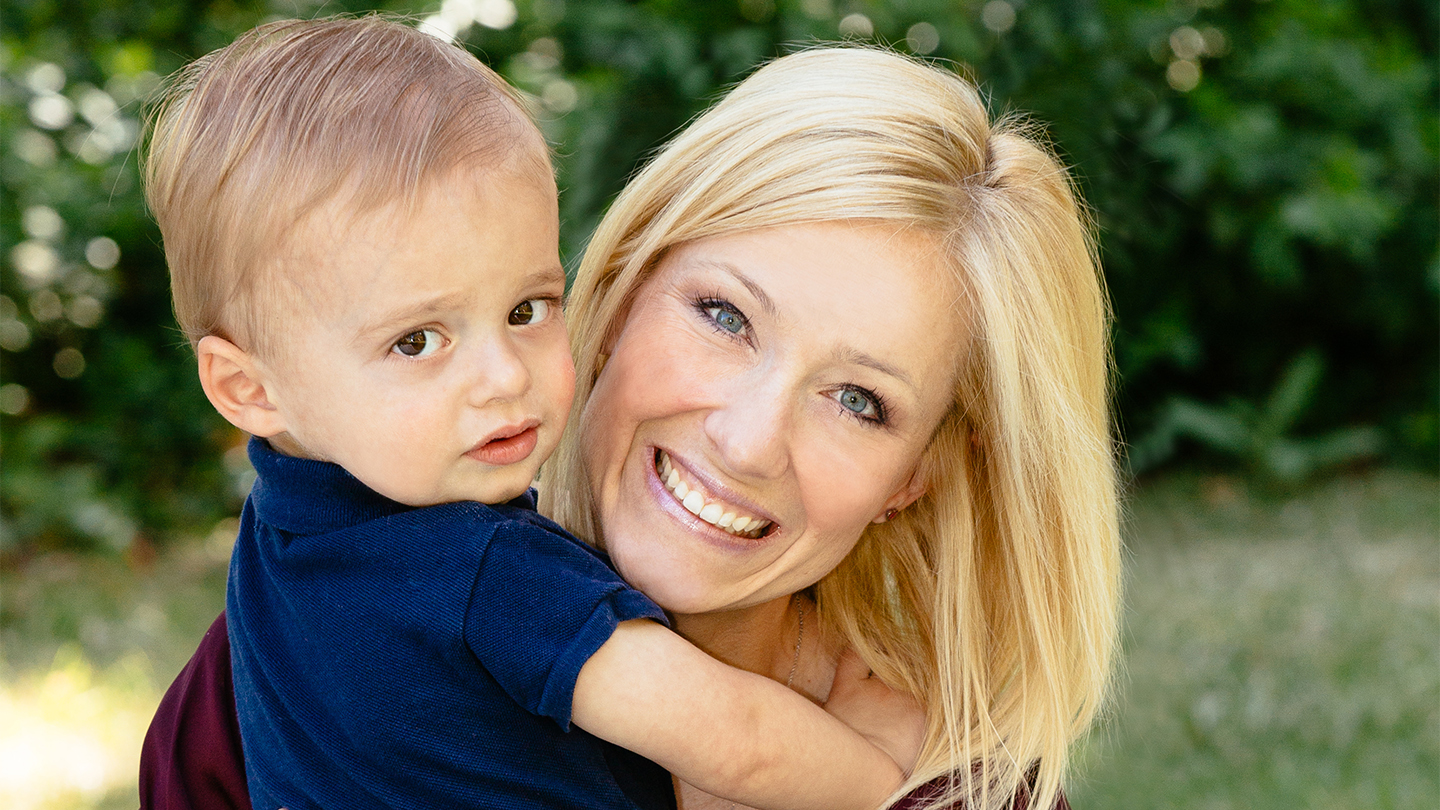
Maxwell and Amber Freed. Photo: Brad Livengood
To address his already complex medical needs, Maxwell has a dozen therapy sessions every week, ranging from speech to equine therapy. As for Freed, whenever her children are napping or in preschool, she spends every minute trying to advocate, fundraise, and corral scientists.
“As a mother myself, I have a huge amount of respect for Amber—I think she’s a hero,” says Paz. “She has made so much progress in such a short period of time; it’s truly remarkable. She basically took the world into her own hands to make a difference.”
Thinking back to that diagnostic room, being told that nothing could ever be done, Freed is now overjoyed that a cure is within reach. And when the gene therapy is finally ready for a clinical trial, she and her son will be first in line.
“After we solve SLC6A1, I’m going to have a huge party with Vanilla Ice as the DJ,” says Freed. “I believe in positive visions and I know that will happen. Then, I want to take the blueprint of what I’ve done to help the next family, and the next one after that.”
Freed’s dream is that SLC6A1 will one day be on all newborn screening panels. Parents might be told by their doctors that their child has a horrible disease, but they’ll also be informed that their baby can receive gene replacement therapy before leaving the hospital and will never experience any symptoms.
“This is just going to be a chapter in their book,” Freed says. “No family should ever have to go through this. I never want there to be another Maxwell Freed.”
Featured Experts
Support Discovery Science
Your gift to Gladstone will allow our researchers to pursue high-quality science, focus on disease, and train the next generation of scientific thought leaders.
Embracing Change: Darlene Hines Shares Her Journey of Growth, Resilience, and Giving Back
Embracing Change: Darlene Hines Shares Her Journey of Growth, Resilience, and Giving Back
Longtime Gladstone supporter Darlene Hines reflects on her journey of learning, growth, and giving after her husband’s passing
Donor StoriesVisionary Philanthropists Establish Center to Harness Computational Biology for Cancer Research
Visionary Philanthropists Establish Center to Harness Computational Biology for Cancer Research
A search for the brightest minds in cancer and AI led Hope and Sanjit Biswas to give in their own backyard.
Philanthropy Donor Stories Cancer Biswas Center for Transformative Computational Cancer Biology Data Science and Biotechnology Pollard Lab AI Big DataThe Risk and the Reward
The Risk and the Reward
How the Dolby family works to improve outcomes for people with Alzheimer’s disease
Donor Stories Alzheimer’s Disease


